Ceiling fans are a common feature in most homes and offices. They offer comfort and ventilation, especially during hot weather conditions. However, there comes a time when you may need to remove your ceiling fan for various reasons such as replacing it with a new one or repairing it. Removing a ceiling fan may seem like an easy task, but if not done correctly, it can be dangerous and cause damage to the ceiling or the fan. As a professional ceiling fan installation and repair technician, I have encountered many cases where clients have attempted to remove their ceiling fans by themselves, only to end up causing more harm than good.
In this article, I will provide you with step-by-step instructions on how to safely remove your ceiling fan without damaging your ceiling or the fan itself. It is important to note that before attempting any repair or installation work on your ceiling fan, turn off the power source at the circuit breaker or fuse box. Additionally, ensure that you have all the necessary equipment and tools needed for the job. With my guidance, you can successfully remove your ceiling fan without any hitches and avoid unnecessary expenses of hiring a professional technician.
Turn Off Power Source Before Starting
Ceiling fan removal requires the first step of turning off the power source. The power source could be a switch or a circuit breaker in the main electrical panel. Before identifying and turning it off, it is important to ensure that you have the right tools for the job. These include a voltage tester, screwdrivers, pliers, and wire cutters.
To identify the power source, start by checking if there is a switch dedicated to the ceiling fan in the room. If there isn’t one, check for a circuit breaker labeled ‘ceiling fan’ or ‘lighting.’ In case you cannot find an obvious label or switch, turn off all power sources to the room from the main electrical panel. It is always better to err on the side of caution when dealing with electricity.
Before turning off any power sources, it is crucial to use a voltage tester to ensure that you are working with dead wires. A voltage tester detects if there is any live electricity running through wires before handling them; this prevents electrical shock and electrocution. Once you have identified and turned off the power source and used your voltage tester to ensure no live electricity runs through any wires, you can move on to gathering necessary equipment and tools required for removing your ceiling fan.
Gather The Necessary Equipment And Tools
Gathering the necessary equipment and tools is crucial before starting to remove a ceiling fan. This will make the process more efficient and prevent any unnecessary delays. Here is an equipment checklist that every technician should have on hand:
- Ladder: A sturdy ladder will help you reach the fan with ease.
- Screwdriver set: Different types of screwdrivers are needed to remove screws from the fan blades, canopy, and mounting bracket.
- Pliers: Needle-nose pliers come in handy when removing wire connectors.
- Voltage tester: This tool will ensure that there is no electrical current running through the wires before handling them.
Safety measures must always be taken to avoid accidents during the removal process. Before starting, it is important to switch off the electricity supply for both the room and the circuit breaker box. In addition, it is necessary to follow these safety precautions:
- Use gloves and eyewear: Gloves provide grip and protect your hands from cuts, while eyewear shields your eyes from debris or dust.
- Wear appropriate clothing: Avoid loose clothes or jewelry as they can get caught in moving parts of the fan.
- Secure the blades: Tape or tie down each blade securely to prevent them from accidentally falling during removal.
- Seek assistance if needed: Removing a ceiling fan can be difficult for one person alone; don’t hesitate to ask for help.
By obtaining all necessary equipment beforehand and following safety measures, you can easily remove a ceiling fan without any issues. However, before proceeding with removal, there are additional safety precautions that must be taken into consideration first – which we’ll discuss in further detail in our subsequent section about ‘safety precautions to take before removing the fan’.
Safety Precautions To Take Before Removing The Fan
After gathering all the necessary equipment and tools, the next step in removing a ceiling fan is taking safety precautions. Before starting any work, it is important to conduct a pre-installation inspection of both the fan and the electrical box. Check for any damages or loose connections that may cause harm during removal.
One of the most important safety precautions to take when removing a ceiling fan is proper ladder usage. Make sure to use a sturdy, properly rated ladder that can support your weight and the weight of any tools or equipment you may be using. Always keep three points of contact with the ladder at all times, such as two feet and one hand or two hands and one foot. Never stand on the top rung or overreach while on the ladder.
In addition to these safety precautions, it is important to determine the type of mounting bracket before starting removal. This will affect how you approach disassembling and disconnecting the fan from its mount. Use this table below as a guide to help identify which type of mounting bracket your ceiling fan has:
| Mounting Bracket Type | Characteristics |
|---|---|
| Standard Mount | Fan hangs from a pole attached to an electrical box |
| Flush Mount | Fan sits directly against ceiling without a pole |
| Angled Mount | Fan hangs from a pole attached to an angled electrical box |
By taking these safety precautions and identifying the type of mounting bracket beforehand, you can ensure a smooth and safe removal process for your ceiling fan.
Determine The Type Of Mounting Bracket
To successfully remove a ceiling fan, it is essential to determine the type of mounting bracket that holds it in place. Different types of ceiling fan mounting brackets require different removal methods, so it is crucial to identify the type before proceeding with any further steps.
There are various types of ceiling fan mounting brackets, including standard mounts, flush mounts, and sloped mounts. Standard mounts have a downrod that connects the motor housing to the mounting bracket, while flush mounts attach directly to the ceiling without any downrod. Sloped mounts are designed for angled ceilings and come with an angled ball joint that allows proper installation on sloped surfaces.
To troubleshoot common installation issues related to mounting brackets, ensure that all screws and bolts are tightly secured in place. Check if the bracket is level and if there are any missing components or damaged parts that may cause instability. It is also essential to use appropriate tools when installing or removing a ceiling fan and to read and follow the manufacturer’s instructions carefully.
Identifying the type of mounting bracket is an important step in removing a ceiling fan safely and efficiently. By understanding the differences between standard mounts, flush mounts, and sloped mounts, you can determine which method to use for removing your specific ceiling fan. In the next section, we will discuss how to remove the fan blades from your ceiling fan.
Removing The Fan Blades
After successfully removing the fan canopy cover, it’s time to move on to taking off the fan blades. The first step in this process is to locate and unscrew any screws or bolts that secure each blade onto the motor housing. Once all of them have been removed, gently pull each blade away from the motor housing until it slides off completely.
If you’re looking to replace your fan blades with new ones, then it’s important to choose a set that is compatible with your particular ceiling fan model. This information can usually be found in the owner’s manual or by contacting the manufacturer directly. Additionally, proper maintenance for fan blades involves cleaning them regularly with a soft cloth or brush and ensuring that they are balanced and secured tightly onto the motor housing.
By taking care when removing your ceiling fan blades and properly maintaining them, you can extend the lifespan of your ceiling fan and ensure that it continues to operate smoothly for years to come. With this in mind, let’s move on to the next step: removing the canopy cover without causing any damage to your ceiling or wiring.
Removing The Canopy Cover
As the fan blades are now removed, it is time to move onto removing the canopy cover. As the saying goes, “patience is a virtue,” and this holds true when it comes to dismantling a ceiling fan. Rushing through the process can lead to errors and damage. Take your time, and follow each step carefully.
To remove the canopy cover, start by loosening the screws that hold it in place. Once they are loose enough, gently slide the cover down to expose the wiring. It is essential to ensure that you do not pull on any wires while sliding the canopy down as this may cause damage.
Now that you have access to the wiring, it’s time to remove any remaining hardware holding up your ceiling fan. This will include screws and bolts that attach the mounting bracket of your fan to your ceiling box. After completing this step, you can then disconnect all wires from their respective terminals before proceeding with painting options or installing a new fan.
- Before replacing hardware, clean all components thoroughly.
- Consider repainting or refinishing any scratched or damaged parts.
- Check for compatibility between old hardware and new components.
In summary, removing a ceiling fan requires patience and careful attention to detail. After removing the blades, loosen screws holding up your canopy cover without pulling on wires exposed during this process. Once you remove any remaining hardware holding up your fan and disconnect wires from their terminals, consider cleaning components thoroughly before replacing or painting them if desired before installing a new one.
Disconnecting The Wires
To disconnect the wires of a ceiling fan, you must first identify which wires are connected. The three types of wires that may be present are ground, neutral and hot wires. Ground wires are usually green or bare copper, neutral wires are white, and hot wires can be black, red or blue. Before you begin disassembling the ceiling fan, ensure that you have turned off the power supply to avoid electrocution.
Once you have identified the different types of wires present in your ceiling fan, it is time to disconnect them. To do this, use a wire stripper to cut away any insulation from the ends of the wires. Twist each wire clockwise to remove it from its respective terminal. You can then proceed to remove any screws that may be holding the wires in place.
Proper wire disposal is essential when removing your ceiling fan’s wiring. Do not simply throw away old wiring; instead, dispose of it properly by recycling it at a local scrap metal facility or contacting your local waste management company for specific instructions on how to dispose of electronic waste. Remember to wear gloves when handling used wiring as they may contain sharp edges and other hazardous materials.
Transitioning into the next section about removing the mounting bracket, once all the wiring has been disconnected and properly disposed of, you can proceed with removing the mounting bracket from your ceiling. This step involves using a screwdriver to unscrew any screws holding the bracket in place before carefully detaching it from your ceiling.
Removing The Mounting Bracket
Once you have successfully removed the blades and disconnected the wires, it is time to remove the mounting bracket that attaches your ceiling fan to the ceiling. It is essential to ensure this step is performed safely and correctly to avoid any accidents or damage to your ceiling.
Different types of brackets may be used for different ceiling fans, but there are generally two ways they can be attached: with a ball-and-socket joint or a J-hook. To remove the bracket safely, you’ll need a few tools, including a screwdriver, pliers, and an adjustable wrench.
Firstly, locate the screws holding the bracket in place; these screws will be directly above where your electrical box is attached to your ceiling joist. Use your screwdriver to remove them carefully while holding onto the bracket with your other hand to prevent it from falling. Once you have removed all of the screws, gently lower the mounting bracket down and away from the electrical box.
- Be sure not to let go of the bracket until it’s safely on the ground.
- Place a cloth or tarp underneath where you’re working to catch any debris that falls.
- If there are any stubborn screws holding onto your mounting bracket, use pliers or an adjustable wrench for extra leverage.
Now that you have successfully removed the mounting bracket from your ceiling fan, you may notice some holes left in your ceiling where it was attached. In our next section, we will guide you through how to patch these holes correctly without causing further damage to your ceiling or walls.
Patching Holes In The Ceiling
After successfully removing the mounting bracket, it is time to move on to the next step of uninstalling the ceiling fan. Start by turning off the power source to prevent any accidents from happening. Then, carefully detach the wires connecting the fan to the ceiling. It is crucial to label each wire according to their corresponding colors for easier reinstallation later on.
Once you have removed all the wires, unscrew and take down the fan motor from its bracket. Be careful not to damage any other parts of the ceiling or surrounding fixtures in the process. Afterward, inspect your ceiling for any damages caused by previous installations of your fan. This is an excellent opportunity to repair drywall and use painting techniques that can enhance your ceiling’s appearance.
Repairing drywall is a common necessity when uninstalling a ceiling fan since it often leaves holes or cracks on your ceiling surface. To fix this issue, apply drywall compound using a putty knife and smoothen it out until level with your existing wall surface. Leave it to dry completely before sanding and painting over it using proper techniques that match your existing wall color.
With all necessary repairs done, you may now proceed with installing a new mounting bracket (if necessary).
Installing A New Mounting Bracket (If Necessary)
Choosing the right mounting bracket is a crucial part of installing a ceiling fan. There are various types of mounting brackets available in the market, and you need to choose the one that is compatible with your ceiling fan. Ensure that the bracket is sturdy enough to support the weight of your fan and has a secure fit on your ceiling. Always refer to the instructions manual before making any purchase.
Common mistakes made while selecting a mounting bracket include choosing a bracket that does not match the weight or size of your fan, or choosing one that does not fit securely on your ceiling. This can lead to wobbling or even falling off of your fan, which can be dangerous. Ensure that you take accurate measurements and consult an expert if needed.
To install a new mounting bracket, first, remove the old one by unscrewing it from the ceiling. Then, align the new bracket with the screw holes in your ceiling and use screws to attach it securely. Make sure that all screws are tightened properly and check for any wobbling or looseness in the bracket before proceeding with wiring your new fan.
With your new mounting bracket installed correctly, you can now proceed to wire your new fan. Remember to turn off power supply at breaker box before starting any electrical work.
Wiring The New Fan
After successfully installing the new mounting bracket, it is now time to remove the old ceiling fan. Before proceeding with this task, make sure that the electrical power supply is turned off. This step is crucial because working with live wires can be dangerous and may cause electrocution. Once you have confirmed that the power supply is turned off, you can proceed with removing the old ceiling fan.
To remove the old ceiling fan, start by unscrewing and removing the canopy cover from the mounting bracket. Next, detach any wiring connections between the ceiling fan and electrical supply by removing wire nuts or screws holding them together. Once all wiring connections are detached, carefully take down the old ceiling fan from its mounting bracket.
After successfully removing the old ceiling fan, it’s time to prepare for a new one. You can now move on to wiring your new ceiling fan in place of the old one. Remember to follow proper electrical safety guidelines while performing this task to avoid accidents or injuries during installation.
- Check if there are any visible damages on any part of your new ceiling fan before installation.
- Make sure that all electrical wiring connections are tight and secure.
- Verify that all parts of your new ceiling fan are correctly installed as per manufacturer’s instructions.
- Double-check all wirings before turning on power supply for testing purposes.
Now that you have successfully removed your old ceiling fan and prepared for a new one, let’s proceed with attaching the canopy cover for a complete look.
Attaching The Canopy Cover
Once the old ceiling fan has been removed, it is time to install the new one. One important step in this process is attaching the canopy cover. The canopy cover is a decorative piece that covers the electrical box and wiring, giving the ceiling fan a clean and finished look.
Before attaching the canopy cover, make sure that all electrical connections have been made properly and securely. This includes connecting the wires from the ceiling to those on the fan using wire nuts, checking for any loose or exposed wires, and ensuring that all screws are tightened securely.
To attach the canopy cover, first slide it over the mounting bracket until it clicks into place. Make sure that all screws on the mounting bracket are tight before proceeding. Then, use a screwdriver to tighten the screws on the canopy cover itself. Double-check that everything is secure before moving on to attaching other parts of the ceiling fan, such as blades and light fixtures.
By following these steps for installing a ceiling fan and troubleshooting any issues with attaching the canopy cover, you will be able to ensure a safe and functional installation for your home or business. In order to continue with your installation process, let’s move on to how to attach your fan blades securely without damaging them or causing any wobbling issues during operation.
Attaching The Fan Blades
As the saying goes, “a blade is only as good as its sharpness.” This holds true for ceiling fan blades as well. Choosing the right fan blades can make all the difference in terms of functionality and aesthetics. When selecting fan blades, it’s important to consider factors such as size, material, and shape. For example, larger blades tend to move more air but can be noisier than smaller ones. Wooden blades are great for a natural look, while metal blades are a good choice for an industrial aesthetic.
Once you’ve chosen the perfect set of fan blades, it’s crucial to maintain them properly in order to keep your ceiling fan running smoothly. A few tips for maintaining fan blades include regularly cleaning them with a damp cloth or vacuuming them with a soft brush attachment to remove any dust or debris that may have accumulated. It’s also important to check the balance of your fan blades periodically by using a balancing kit or calling in a professional technician if necessary.
By choosing the right fan blades and maintaining them properly, you’ll be able to enjoy optimal performance from your ceiling fan for years to come. In the next section, we’ll discuss how to test your newly installed ceiling fan to ensure that everything is working correctly.
Testing The Fan
After dismantling the ceiling fan, it is important to test its functionality before installing it back again. Testing the fan motor will ensure that it is in good working condition and that there are no underlying issues that may cause problems in the future.
To test the fan motor, you will need a voltage tester or a multimeter. Begin by checking if there is power flowing to the fan’s motor. If the power source is okay, switch on the fan using its remote control or pull chain switch. Observe if the blades rotate smoothly and that they do not wobble or make any unusual noises.
Common issues with ceiling fans include improper blade alignment, faulty wiring, and damaged motors. Troubleshooting these problems can be challenging, but identifying them early can save you significant repair costs in the long run. Always reach out to a certified technician for complex repairs.
Proper functioning of your ceiling fan guarantees comfort during hot and humid weather conditions. After testing it for proper functioning, take time to clean up any debris or dust left behind during disassembly before proceeding with installation. In addition, inspect all other components of your ceiling fan such as blades and brackets to ensure they are also in good condition before reassembling them back together.
Clean Up And Final Thoughts
A quick check of the ceiling fan’s manual can help you identify the tools you’ll need to remove it. Once you have all the necessary tools, turn off the power supply to avoid electrical hazards. Use a ladder or a step stool to reach the fan and unscrew its blades from their mounting brackets. The blades will come off easily, but be careful not to damage them in the process.
After removing the blades, unscrew and disconnect the fan motor from its mount. This will free up the fan so that you can detach it from your ceiling. Remove any screws or bolts that hold the bracket in place and carefully lower the fan down. Finally, disconnect any wiring connections between your old fan and your home’s electrical wiring.
When disposing of an old ceiling fan, be sure to follow local regulations for hazardous waste disposal. You may need to take it to a specific recycling center or dispose of it at a landfill designated for electronic waste. As for cost comparison, hiring a professional electrician for installation may cost more than removing and installing a ceiling fan yourself, but it can save you time and ensure proper installation.
Table Example:
| Ceiling Fan Removal Cost | Professional Installation Cost |
|---|---|
| $50-$150 | $100-$500 |
Remember that doing things yourself comes with risks and can sometimes lead to costly mistakes if you’re not experienced in handling electrical work or DIY projects involving heavy equipment like ceiling fans. If you’re unsure about removing your ceiling fan yourself or want to ensure that everything is done safely and correctly, consider hiring a professional electrician for assistance instead of doing it alone. Additionally, always keep safety in mind when performing any household repairs or maintenance tasks involving electricity or other potential hazards.
Conclusion
As a ceiling fan installation and repair technician, it is crucial to follow the proper steps to remove a ceiling fan safely. Turning off the power source, gathering necessary equipment and tools, and taking safety precautions are necessary before starting the process. The type of mounting bracket must be determined to avoid any damage or accidents during removal.
Removing the fan blades and attaching the canopy cover should be done with care to prevent any harm. Once the fan blades have been removed, they can be cleaned thoroughly and reattached using proper techniques. Testing the fan after installation ensures its proper functioning.
In conclusion, removing a ceiling fan requires careful attention to detail and following all safety procedures. As technicians, we understand how important it is for our clients’ homes or businesses to have properly installed ceiling fans. By following these steps correctly, one can remove a ceiling fan without causing any damage or injury. Remember that safe removal of a ceiling fan leads to efficient replacement or repair, which ultimately benefits both homeowners and businesses alike.
Image Credits
- “Ceiling Fan” by jeffk (featured)

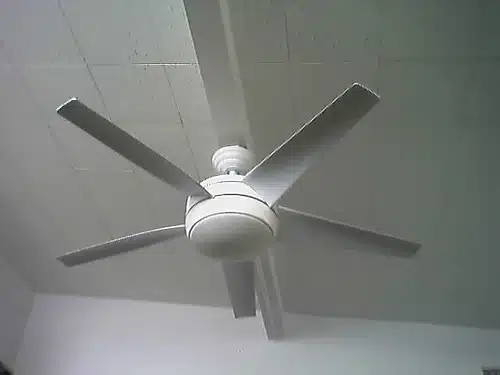



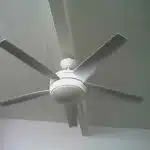


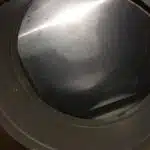

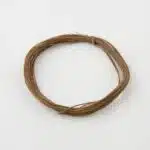


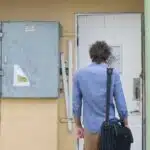
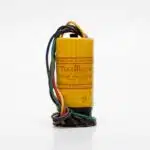

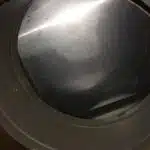
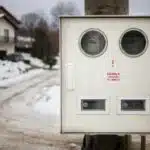


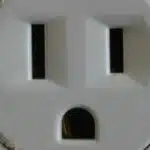


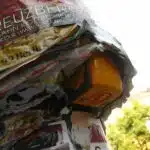



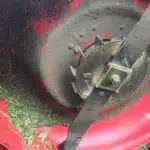
![How To Replace A Single-Pole Wall Switch 28 '... All in all it's just another [switch] in the wall.' ...](https://green-life.blog/wp-content/uploads/2023/05/17xmP5qMtVjq-150x150.jpg.webp)
